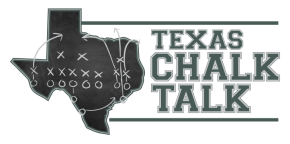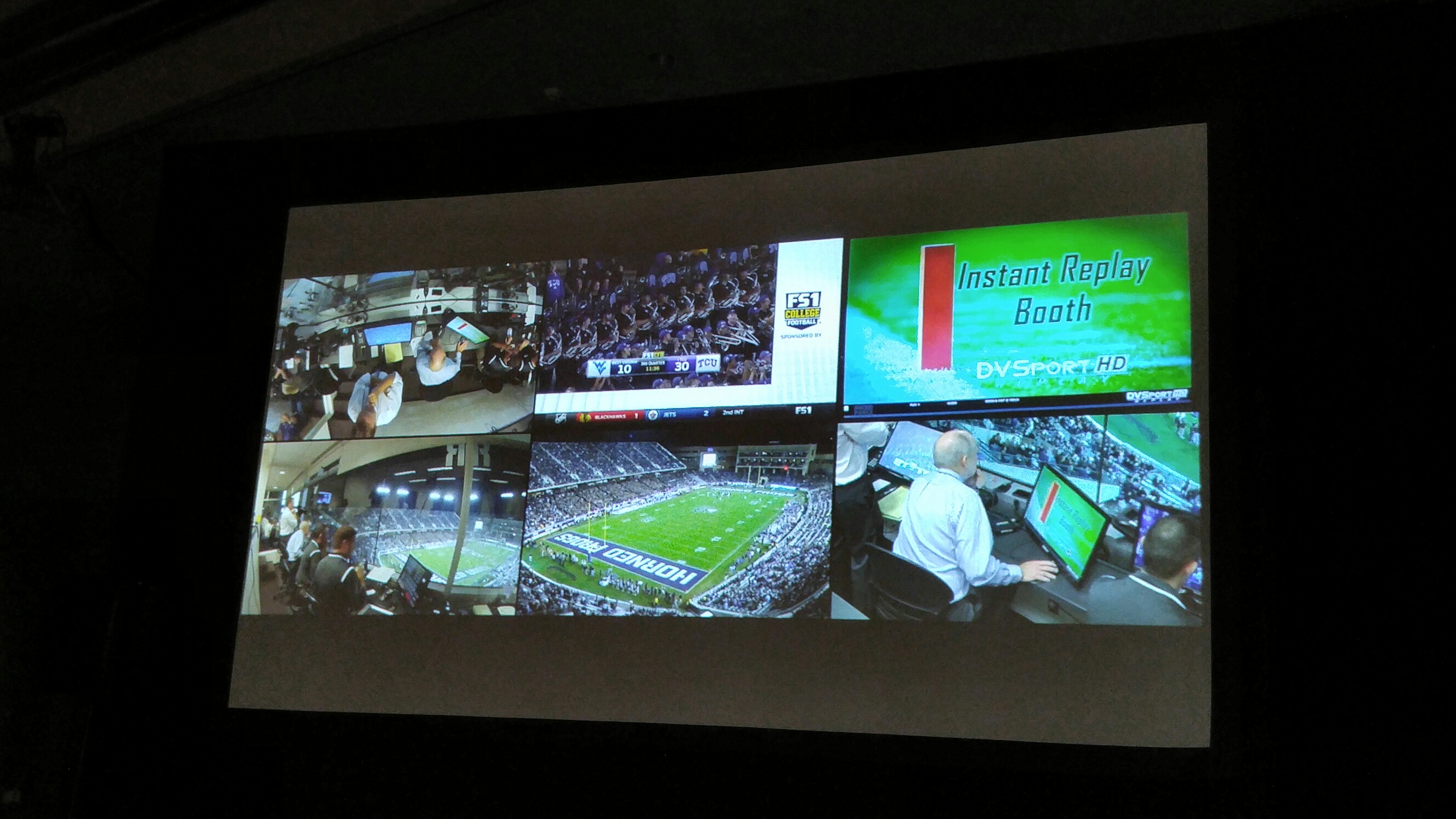Reviewing the Hunter-Elliott play during the Longhorns’ win over Notre Dame
We at TexasChalkTalk.com have heard a lot of chatter about the play involving Notre Dame receiver Torii Hunter Jr. and Texas defensive back DeShon Elliott during the Longhorns’ 41-38 double overtime victory Sept. 4.
Thirty-six seconds remained in the third quarter and the Irish trailed 31-28. On third and 12 from the Texas 19, Hunter ran to the end zone from the left side to catch the pass. Just as he was about to tuck the ball securely, Elliott hit him hard enough to dislodge the ball to prevent the score. It also sent Hunter to the locker room. He didn’t return and missed the Irish’s 39-10 win over Nevada the following week.
The talk has been that Big 12 officials should have called targeting and didn’t bother to review the play .
Nothing is further from the truth.
During Big 12 media days in July, Walt Anderson, the conference’s coordinator of officials, addressed reporters and even had video to illustrate the changes or to demonstrate a specific rule. One of them was targeting.
“It’s not really a change at all in the rule as to what is or is not targeting,” Anderson said. “The big change though is in the ability of constant replay now to get more involved in two areas with targeting. … But the replay official can look at the entirety of the Targeting Rule as opposed to what has been limited in the past which was only whether or not there was contact made to the head, not really the act building up to it, the intent of the action by the player or the whole context of the play.”
Anderson further explained that when a play is obviously targeting and the on-field officials haven’t called it, replay officials have the authority to stop play to review it and call targeting.
“Everybody has to understand that that doesn’t mean we’re stopping every big hit in a football game just in case it might be targeting,” he continued. “It’s got to be the one that stands out pretty immediately to everybody that it is targeting. … What I told officials is we’re going to play on the should haves. We’re not going to stop play on the could haves. The way the college system works, every play is reviewed and analyzed and the few seconds we’ve got to do that by the replay official, and these guys have to make pretty quick decisions about whether or not to stop play.”
To make sure the proper evidence is presented, I watched the play from the original television feed of the Notre Dame-Texas contest where three angles of the play were shown to viewers. In addition, I used a stop watch to time the amount of time between officials blowing the play over and when Hunter got to his feet after medical staff went to him in the end zone. After 90 seconds, Hunter went from laying down on his back to sitting; 30 seconds later he was on his feet and walking toward the Notre Dame sideline.
During those two minutes, officials looked at numerous angles of the play.
It just so happens that one of the examples Anderson showed in July included a timeout during the game.
“What you can see from this especially when we have a stoppage, these guys have a lot of work to do during this break because it’s required that they record quite a bit of information relative to this stoppage, both their decisions and the reasons for their decisions as well as time factors,” he said.
This writing isn’t meant to say officials were right or wrong in not flagging Elliott for the play; it is simply an attempt to better explain the process of what is happening in the replay booth. Whether it was targeting or not is someone else’s call.
But let me leave you with this. Anderson applauded the way Big 12 athletes are playing the sport and commended coaches for teaching better ways to tackle and hit.
“We review every play of every game in all of our games and the thing that we have observed first and foremost is the change in behavior and the style of play and technique that our players are demonstrating and it’s through good coaching,” he said. “The coaches have bought into the Targeting Rule. They understand not only the importance but the emphasis that will be placed on it. We have worked with them with coming up with techniques. We have four high-risk indicators, four low-risk indicators that we share with them in terms of helping to their their players safe techniques.”
Then Anderson showed an example of a defender who delivered a blind side legal hit where he turned his head to the side to try to hit with his shoulder and not attack the neck or head area.
“He is lowering the strike zone, and that is what we see play-in and play-out numerous times,” he said.
Love it? Hate it? Want to tell me to take a hike? Let me know!




